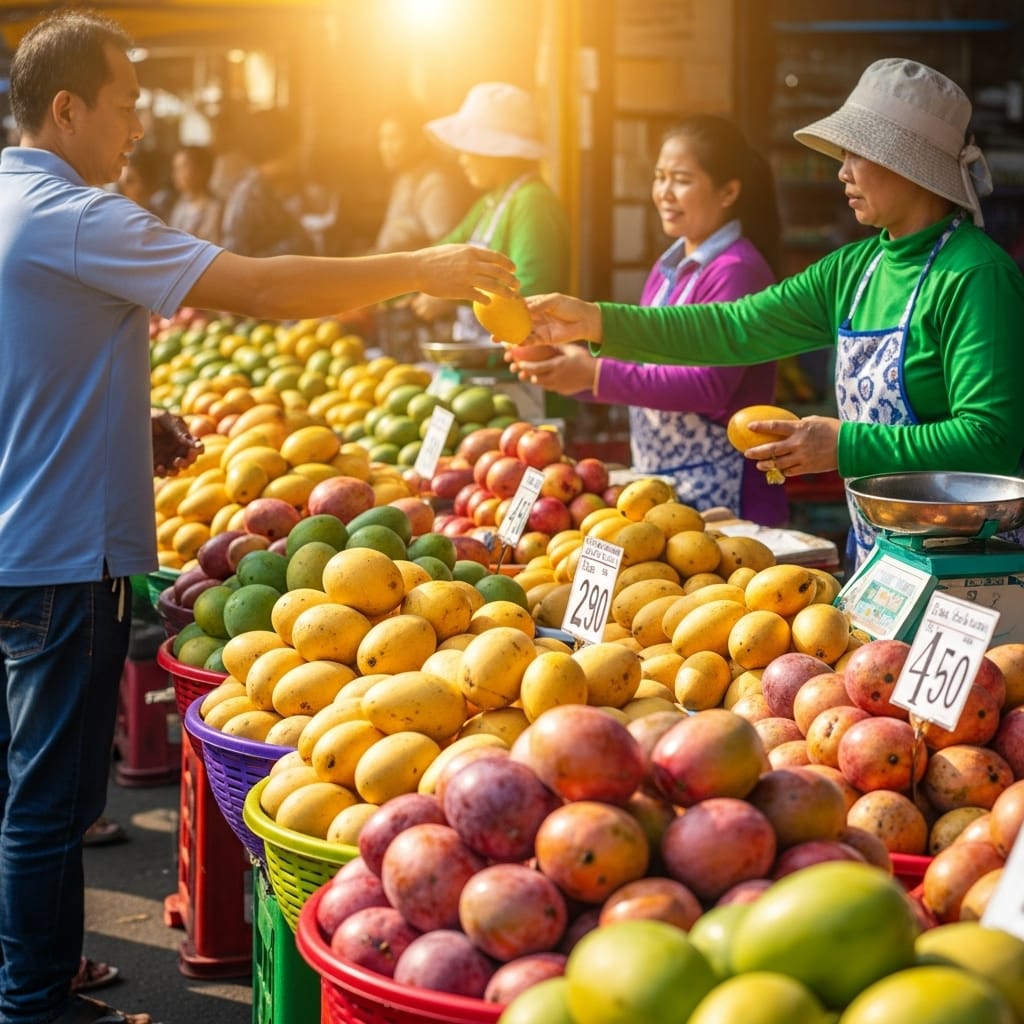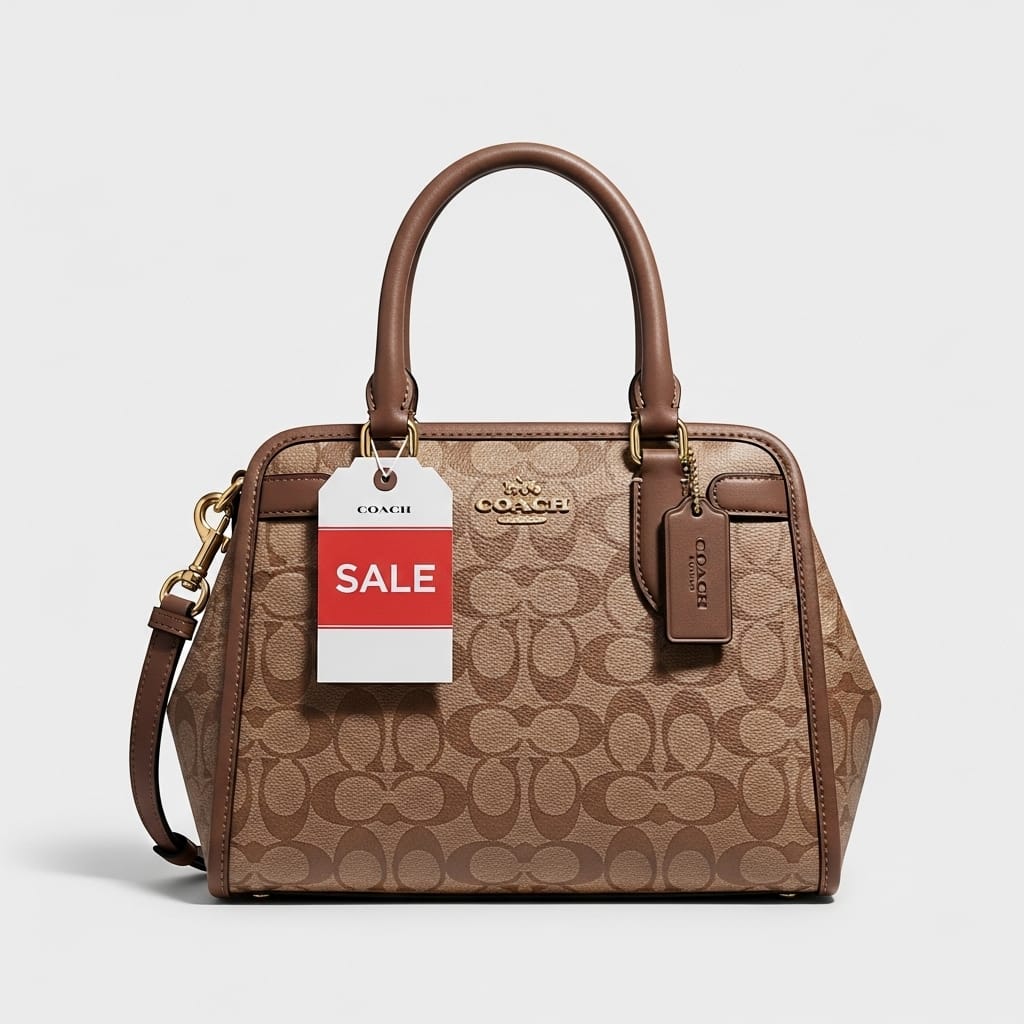
The Ultimate UK Guide to Mango: From Luscious Fruit to Unmissable Fashion Sales
There’s a certain magic to the word ‘mango’, isn’t there? For some, it conjures images of sun-drenched holidays, the sweet, sticky juice of a perfectly ripe fruit dripping down their chin. It’s the taste of summer, a burst of exotic sunshine available right here in our local UK supermarkets. For others, the word sparks a different kind of excitement – a frisson of sartorial anticipation. It means sleek, Mediterranean style, a wardrobe refresh, and the thrilling hunt for a bargain in the much-anticipated Mango fashion sale. Whether you’re craving a culinary delight or a chic new outfit, the allure of the mango, in both its glorious forms, is undeniable. This is your ultimate guide to embracing and enjoying both. We’ll dive deep into the world of the glorious fruit – how to choose the perfect one, the best varieties to look out for, and how to use it in your kitchen. Then, we’ll switch gears and equip you with an iron-clad strategy for conquering the Mango clothing sale, ensuring you walk away with treasures you’ll love for seasons to come. So, get comfortable, and let’s begin our journey into the wonderful world of mango.
A Feast for the Senses: Unpeeling the Magic of Mangoes
Long before it was a byword for high-street chic, the mango was revered as the ‘king of fruits’. Its story is a rich and ancient one, a tale of flavour that has travelled across continents to become a beloved staple in British fruit bowls. Understanding its journey only adds to the appreciation of its complex, honeyed taste.
A Brief, Juicy History

Originating in the foothills of the Himalayas in India and Southeast Asia over 4,000 years ago, the mango holds deep cultural and religious significance in its native lands. Seen as a symbol of love, happiness, and prosperity, it was spread along ancient trade routes by Buddhist monks and Persian traders. It eventually made its way to the Middle East, Africa, and South America thanks to Portuguese explorers in the 16th century. Its arrival in the UK is much more recent, becoming more widely available with the advent of modern global transport. What was once a rare, expensive luxury is now a familiar and welcome sight, bringing a touch of the tropical to our temperate isle.
A Guide to Mango Varieties in the UK
Walking into a British supermarket, you might be faced with a few different types of mango. While there are over a thousand varieties worldwide, a select few consistently grace our shelves. Knowing the difference can elevate your mango experience from simply pleasant to utterly sublime.
- Kent: A fantastic all-rounder. Originally from Florida, the Kent mango is large and oval-shaped, with a reddish-green skin. The key here is not to judge it by its colour, as it can remain green even when ripe. It’s prized for its supremely sweet, rich flavour and almost complete lack of fibrous texture, making it perfect for eating fresh.
- Keitt: Another popular variety, often available later in the season. Keitt mangoes are large and have a predominantly green skin with a pink or red blush. Like the Kent, they are sweet and fruity with minimal fibre. Their firm flesh makes them an excellent choice for slicing into salads or salsas.
- Ataulfo (or Honey Mango): Don’t be fooled by its small, kidney-bean shape. The Ataulfo, which hails from Mexico, is a powerhouse of flavour. Its skin turns a beautiful deep gold when ripe, and its flesh is buttery, creamy, and intensely sweet with no fibre at all. It’s a truly luxurious eating experience.
- Pakistani and Indian Mangoes (e.g., Alphonso, Kesar): Often considered the pinnacle of mango perfection, these varieties appear in South Asian grocers and larger supermarkets during their short season (typically May to July). The Alphonso, in particular, is legendary for its perfumed aroma, deep saffron-coloured flesh, and a flavour that blends notes of peach, apricot, and citrus. They are a little more expensive, but worth every single penny for a truly special treat.
The Art of Choosing the Perfect Mango
This is where many of us falter, ending up with a fruit that’s either disappointingly woody or sadly mushy. Forget prodding and poking indiscriminately. Selecting a great mango is a gentle art. Your senses of touch and smell are your best friends here.
Gently press the mango near the stem. A ripe mango will have a slight give, much like a ripe peach or avocado. If it’s rock hard, it needs more time. If your finger leaves a significant dent, it’s likely overripe and may be stringy or bruised inside. Next, bring it to your nose. A ripe mango should have a distinct, sweet, and fruity aroma, especially around the stem area. If you can’t smell anything, it’s not ready yet. Don’t rely too much on the colour, as many varieties, like the Kent, stay green even when they are perfectly sweet and ready to eat.
Beyond the Fruit Bowl: Culinary Adventures with Mango
While eating a fresh, perfectly ripe mango is one of life’s great simple pleasures, this versatile fruit can bring a touch of magic to a huge range of dishes. It’s time to think beyond the smoothie (though a mango lassi is a thing of beauty).
- Spicy Mango Salsa: A fantastic accompaniment to grilled chicken, fish, or just a bowl of tortilla chips at a summer BBQ. Simply dice a firm mango and combine with finely chopped red onion, fresh coriander, a squeeze of lime juice, and a finely chopped red chilli for a bit of a kick.
- Coronation Chicken with a Twist: Elevate the classic British sandwich filler by adding chunks of fresh mango. Its sweetness provides a beautiful counterbalance to the mild curry spices and creamy mayonnaise.
- Refreshing Mango Salad: For a light and vibrant lunch, toss mango slices with rocket, avocado, grilled halloumi, and a zesty lime vinaigrette. The combination of sweet, salty, and peppery flavours is simply divine.
- Easy Mango Sorbet: No ice cream maker needed! Simply blend frozen mango chunks with a squeeze of lime juice and a touch of maple syrup or honey until smooth. Freeze for an hour for a scoopable, dairy-free dessert that tastes like pure sunshine.
From Tropical Treat to High-Street Icon: Mastering the Mango Sale
Now, let’s turn our attention to that other, equally tempting mango. The one that hangs not on a tree, but on a hanger. The Mango fashion brand has been a cornerstone of the British high street for years, offering that perfect blend of timeless style and contemporary trends. And when the sale signs go up, it’s a shopping event that savvy fashion lovers refuse to miss.
The Mango Brand: A Story of Mediterranean Style
Founded in Barcelona in 1984, Mango’s aesthetic is deeply rooted in its Mediterranean origins. The brand exudes a sense of effortless cool, sophistication, and wearable style. It’s the place you go for a perfectly cut blazer, a stylish dress that works for both the office and dinner, or a quality coat that will see you through the British winter in style. It occupies a brilliant middle ground – more elevated than fast-fashion giants, but more accessible than premium designer labels. This positioning makes its sales particularly appealing, as it’s a chance to acquire high-quality, enduring pieces at a fraction of their original price.
Your Strategic Guide to Shopping the Mango Sale
Going into the Mango sale without a plan is a rookie error. It can lead to panic-buying, grabbing things in the wrong size, or missing out on the best items. To emerge victorious, you need a strategy. This is your battle plan.
Phase 1: The Preparation
Success in the sale starts before the sale even begins. A little bit of prep work will put you leagues ahead of the casual browser.
- Sign Up and Get Ahead: The single most important thing you can do is sign up for the Mango newsletter. Subscribers often get early access to the sale, sometimes a full 24 hours before the general public. This is your golden window to snap up the most coveted items in a full range of sizes before they’re gone.
- Create a Wishlist: Spend some time on the Mango website in the week leading up to the sale. Browse the collections and add anything that catches your eye to your online wishlist. When the sale goes live, you can head straight to your list and see instantly which of your chosen items have been discounted. No more frantic searching.
- Know Your Sizing: Sizing can vary between brands. Check Mango’s online size guide and measure yourself if you’re unsure. Read customer reviews for specific items if available, as they often comment on whether a piece runs true to size, small, or large. This minimises the risk of having to deal with returns.
Phase 2: Navigating the Sale – Online vs. In-Store
The digital age gives us two arenas for our shopping mission: the bustling online store and the physical high-street shop. Both have their merits.
Shopping online offers the undeniable advantage of a broader selection and more stock. You can filter by size, colour, and price, making it highly efficient. You can shop from the comfort of your sofa at midnight, which is when many online sales launch. The downside is you can’t feel the fabric or try things on.
Shopping in-store allows you to do just that. You can assess the quality, see the true colour, and, most importantly, try the item on for a perfect fit. However, stores can be chaotic during a sale, with jumbled rails and long queues for the fitting rooms. A good compromise? Use the online store for your main shop, and pop into a physical store for any potential returns or to hunt for a specific item that was sold out online – you might just get lucky.
Phase 3: The Art of the Bargain – What to Actually Buy
A discount is only a bargain if you’re buying something you genuinely need and will wear. The sale is the perfect time to think strategically about your wardrobe.
- Prioritise Investment Pieces: This is your mantra. Look for the items that offer the most value. A classic wool coat, a well-made leather jacket, a timeless trench, a perfectly tailored blazer, or a pair of high-quality leather boots. These are the wardrobe foundations that Mango does exceptionally well. Getting one of these at 50% off is a massive win.
- Focus on Fabrics: Scan the item descriptions for quality materials. Look for 100% cotton, linen, wool, silk, and lyocell. A discounted jumper is a much better buy if it’s a cosy merino wool blend rather than 100% acrylic. These pieces will wash better, last longer, and feel more luxurious to wear.
- Don’t Forget the Basics and Accessories: The sale is a brilliant opportunity to stock up on elevated basics. Think beautifully draped t-shirts, classic striped knits, and well-fitting jeans. Also, check out the accessories section. A leather belt, a stylish handbag, or a pair of elegant earrings can instantly update multiple outfits, and they are often heavily reduced in the sale.
- Check the Outlet: Remember that Mango has a permanent ‘Mango Outlet’ website. This is where past-season stock lives year-round at a discount. It’s always worth a look, especially if you’re searching for a particular item that you missed in a previous sale.
A Tale of Two Mangoes: Your Season of Indulgence Awaits
Whether it’s the sweet, sun-kissed flesh of a perfect Alphonso mango enjoyed on a warm afternoon, or the quiet satisfaction of unwrapping a classic, beautifully cut blazer snagged for a steal in the sale, the joy of the mango is real and multifaceted. It’s a reminder to savour the good things, to appreciate quality, and to find delight in both the natural and the man-made. So, the next time you see a display of golden fruit or a ‘Sale’ sign in a familiar window, you’ll be perfectly equipped to make the most of it. Your season of indulgence is here.







